-
 Bitcoin
Bitcoin $82,373.9697
-3.36% -
 Ethereum
Ethereum $1,851.6745
-2.19% -
 Tether USDt
Tether USDt $0.9995
-0.01% -
 XRP
XRP $2.1068
-5.67% -
 BNB
BNB $604.3688
-4.21% -
 Solana
Solana $125.7138
-4.63% -
 USDC
USDC $1.0000
0.01% -
 Dogecoin
Dogecoin $0.1713
-5.80% -
 Cardano
Cardano $0.6723
-4.55% -
 TRON
TRON $0.2343
1.95% -
 Toncoin
Toncoin $3.6885
-8.69% -
 Chainlink
Chainlink $13.7038
-4.56% -
 UNUS SED LEO
UNUS SED LEO $9.5887
-1.08% -
 Avalanche
Avalanche $20.0178
-2.55% -
 Stellar
Stellar $0.2684
-2.91% -
 Shiba Inu
Shiba Inu $0.0...01276
-4.74% -
 Sui
Sui $2.3137
-9.11% -
 Hedera
Hedera $0.1708
-7.54% -
 Litecoin
Litecoin $86.3372
-2.01% -
 Polkadot
Polkadot $4.0851
-4.64% -
 MANTRA
MANTRA $6.3082
-1.10% -
 Bitcoin Cash
Bitcoin Cash $304.0264
-2.74% -
 Bitget Token
Bitget Token $4.5892
-3.43% -
 Pi
Pi $0.8035
-3.52% -
 Dai
Dai $0.9999
-0.01% -
 Ethena USDe
Ethena USDe $0.9992
0.03% -
 Hyperliquid
Hyperliquid $12.6865
-8.10% -
 Monero
Monero $215.4800
-2.52% -
 Uniswap
Uniswap $6.0913
-2.75% -
 Aptos
Aptos $5.3753
-2.22%
How is the irreversibility of blockchain achieved?
Blockchain's irreversibility comes from its chained cryptographic hashes; altering one block necessitates recalculating all subsequent ones, a computationally impossible task, further secured by consensus mechanisms like Proof-of-Work.
Mar 24, 2025 at 07:42 pm
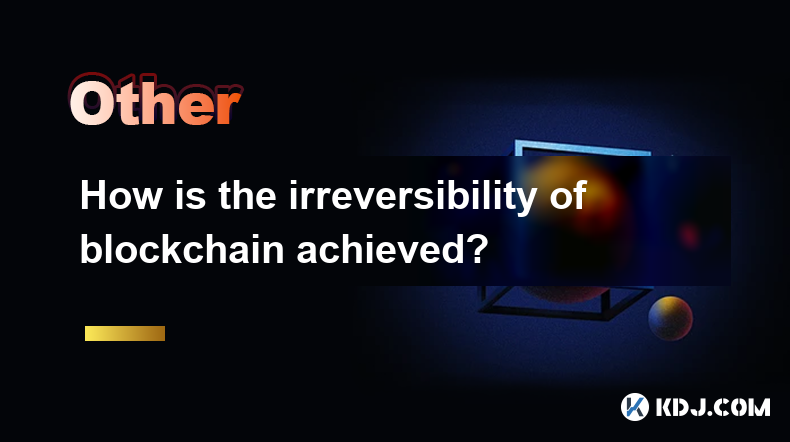
Key Points:
- Blockchain's irreversibility stems from its cryptographic hashing and chain structure.
- Each block's hash incorporates the previous block's hash, creating a chain of dependencies.
- Altering a single block requires recalculating the hashes of all subsequent blocks, a computationally infeasible task.
- Consensus mechanisms, like Proof-of-Work (PoW) or Proof-of-Stake (PoS), further solidify the immutability.
- While theoretically reversible under extreme circumstances, the practical cost makes it impossible.
How is the Irreversibility of Blockchain Achieved?
The fundamental principle behind a blockchain's irreversibility lies in its unique structure and the cryptographic mechanisms underpinning it. Each transaction is grouped into a "block," and each block contains a cryptographic hash—a unique fingerprint—derived from its contents. This hash is a crucial element in ensuring the integrity and immutability of the blockchain.
Crucially, each new block's hash incorporates the hash of the preceding block. This creates a chain-like structure where each block is inextricably linked to the one before it. This linkage is what gives the technology its name, "blockchain." This chain of dependencies is the cornerstone of the system's immutability.
Altering a single transaction within a block would necessitate recalculating the hash of that block. However, this change would also necessitate recalculating the hashes of all subsequent blocks in the chain, a task that would be computationally prohibitive, requiring vast amounts of processing power and time, especially for longer chains. The longer the chain, the more computationally expensive any alteration becomes.
This computational infeasibility is further amplified by the consensus mechanisms employed by various blockchain networks. Proof-of-Work (PoW), for example, requires miners to expend significant computational resources to solve complex cryptographic puzzles to add new blocks to the chain. This process makes it extremely difficult for a malicious actor to alter past transactions.
Proof-of-Stake (PoS), another common consensus mechanism, uses a different approach but achieves similar results. Instead of computational power, validators are selected based on the amount of cryptocurrency they stake. This creates an economic incentive to maintain the integrity of the blockchain, as altering it would result in the loss of their staked funds.
While theoretically, a sufficiently powerful entity could potentially overcome the computational hurdles and alter the blockchain, the sheer cost and resources required make such an undertaking practically impossible. The probability of success is extremely low, especially in well-established, widely-distributed blockchains.
The decentralized nature of blockchain networks also contributes to their irreversibility. Thousands, even millions, of nodes maintain copies of the blockchain. Any attempt to alter the chain on one node would be quickly detected and rejected by the vast majority of other nodes, rendering the attempted alteration futile.
The cryptographic hashing algorithm used (like SHA-256) is designed to be one-way. This means that it's easy to generate a hash from input data, but computationally infeasible to reverse the process and determine the original input data from the hash. This one-way function is critical to the security and irreversibility of the blockchain.
Each block contains a timestamp, further adding to the integrity and chronological order of the blockchain. This timestamp provides a verifiable record of when each transaction occurred.
The irreversible nature of blockchain technology is what makes it so attractive for various applications. From secure record-keeping to transparent transactions, the immutability provided by the blockchain guarantees the authenticity and integrity of data.
Frequently Asked Questions:
Q: Can a blockchain ever be truly reversed?
A: While theoretically possible with immense computational power, the practical cost and difficulty of reversing a blockchain make it essentially irreversible, especially for established networks with many nodes and a long chain history.
Q: How does the cryptographic hash contribute to irreversibility?
A: The cryptographic hash acts as a unique fingerprint for each block. Altering any part of a block changes its hash, requiring recalculation of all subsequent block hashes, making tampering incredibly difficult.
Q: What role do consensus mechanisms play in maintaining irreversibility?
A: Consensus mechanisms like PoW and PoS incentivize participants to maintain the integrity of the blockchain. Altering the chain would be economically or computationally infeasible, making the system resistant to manipulation.
Q: Is there any situation where a blockchain can be altered?
A: In extremely rare scenarios involving significant vulnerabilities in the consensus mechanism or a massive coordinated attack controlling a majority of the network, a blockchain might be vulnerable. However, such scenarios are highly unlikely in established and secure networks.
Q: What are the implications of blockchain's irreversibility?
A: Irreversibility enables trust and transparency, making it ideal for applications requiring verifiable and tamper-proof records, such as supply chain management, voting systems, and digital identity management.
Disclaimer:info@kdj.com
The information provided is not trading advice. kdj.com does not assume any responsibility for any investments made based on the information provided in this article. Cryptocurrencies are highly volatile and it is highly recommended that you invest with caution after thorough research!
If you believe that the content used on this website infringes your copyright, please contact us immediately (info@kdj.com) and we will delete it promptly.
- In the Midst of Solana’s Meteoric Rise, a New Player Emerges
- 2025-03-29 19:50:12
- BlackRock and Grayscale Have Entered Avalanche's (AVAX) Market
- 2025-03-29 19:50:12
- Bitcoin (BTC) Price Drops Against Both US Stocks and Gold, as Gold Outperforms BTC by 17% YTD
- 2025-03-29 19:45:12
- Dogecoin (DOGE) Price Action Reaches a Point of Great Importance
- 2025-03-29 19:45:12
- Coinbase users lose over 400 Bitcoins worth $33.5 million in social media engineering attacks
- 2025-03-29 19:40:13
- Chainlink (LINK) Price Prediction: Targeting a 35% Increase as It Tests the $14 Support
- 2025-03-29 19:40:13
Related knowledge
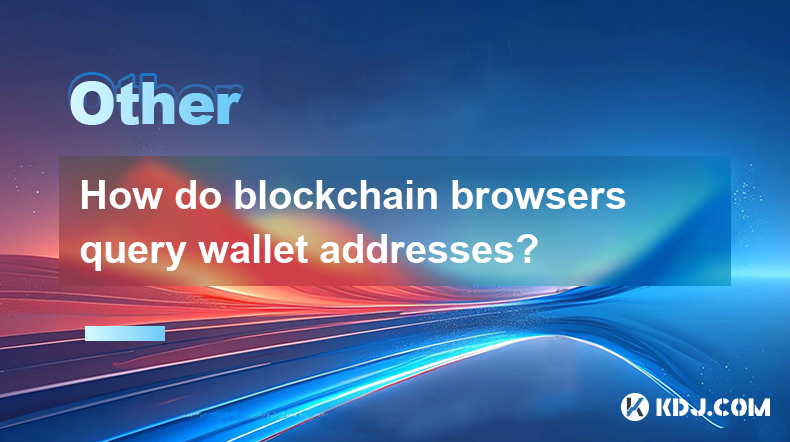
How do blockchain browsers query wallet addresses?
Mar 29,2025 at 05:21pm
Understanding Blockchain Explorers and Wallet Address QueriesBlockchain browsers, often called blockchain explorers, are essential tools for interacting with and investigating blockchain networks. They provide a user-friendly interface to view transaction history, block information, and most importantly, the details associated with specific wallet addr...
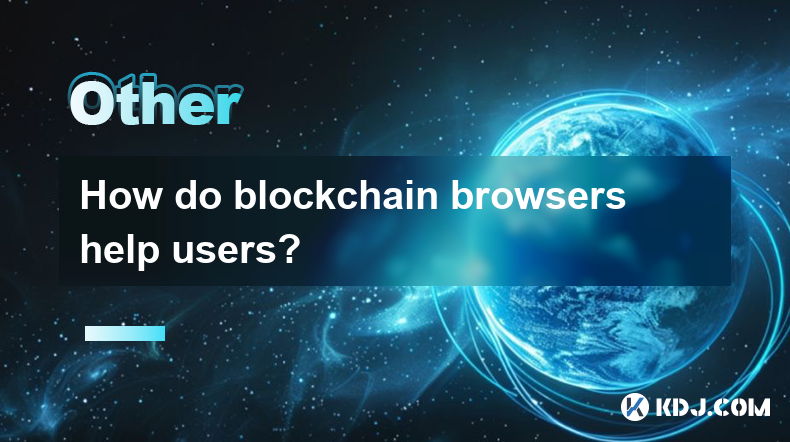
How do blockchain browsers help users?
Mar 29,2025 at 08:28am
Understanding the Role of Blockchain BrowsersBlockchain browsers are specialized tools designed to interact with blockchain networks. Unlike traditional web browsers like Chrome or Firefox, they provide a user-friendly interface for exploring and interacting with the decentralized world of cryptocurrencies and blockchain applications. They offer functi...
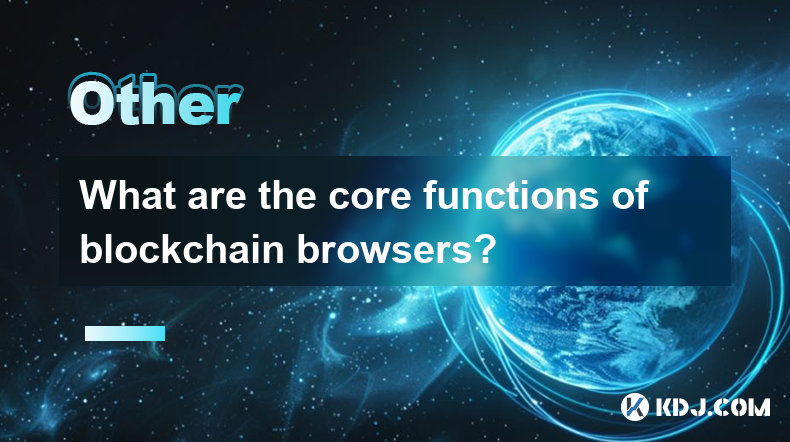
What are the core functions of blockchain browsers?
Mar 29,2025 at 01:50pm
Exploring the Functionality of Blockchain BrowsersBlockchain browsers are specialized tools designed to interact with and explore various blockchain networks. Unlike traditional web browsers, they offer functionalities specifically tailored to the decentralized and transparent nature of blockchain technology. They provide users with a user-friendly int...
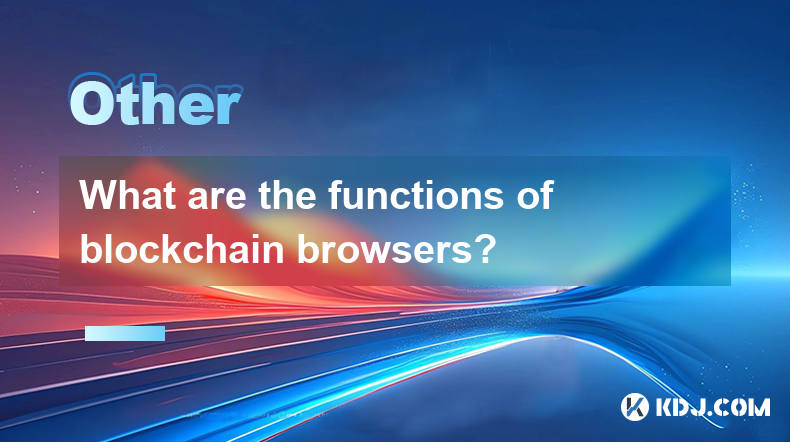
What are the functions of blockchain browsers?
Mar 29,2025 at 07:14am
Exploring the Functionality of Blockchain BrowsersBlockchain browsers are specialized tools designed to interact with and explore various aspects of blockchain networks. Unlike traditional web browsers, they provide functionalities specifically tailored for navigating and understanding the decentralized nature of blockchain technology. They are crucial...
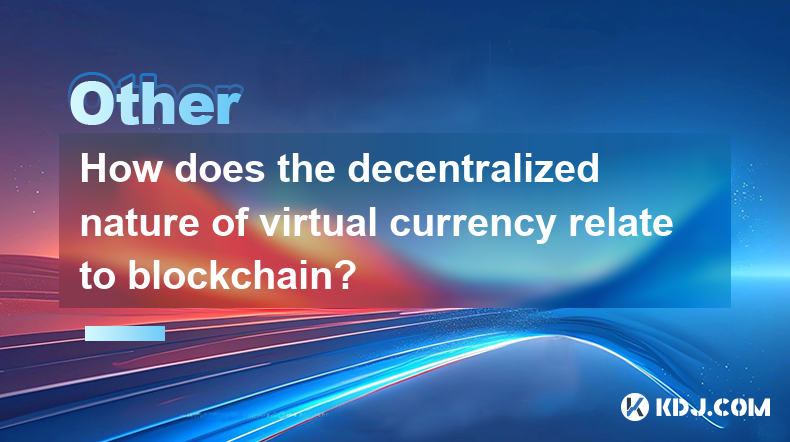
What is the relationship between the decentralized characteristics of virtual currencies and blockchain?
Mar 28,2025 at 06:00pm
In the wave of digital finance, virtual currency attracts everyone's attention with its unique charm, and its decentralized characteristics have become the key to distinguish it from traditional currencies. So what is the close connection between the decentralized characteristics of virtual currencies and blockchain? Don't worry, let's find ...

How does "cross-chain bridge" of blockchain work?
Mar 28,2025 at 03:15pm
Understanding Cross-Chain Bridges in the Cryptocurrency WorldCross-chain bridges are crucial infrastructure in the burgeoning cryptocurrency ecosystem. They facilitate the transfer of digital assets between different blockchain networks, each with its unique architecture and functionalities. This ability to move assets across chains opens up a world of...

How do blockchain browsers query wallet addresses?
Mar 29,2025 at 05:21pm
Understanding Blockchain Explorers and Wallet Address QueriesBlockchain browsers, often called blockchain explorers, are essential tools for interacting with and investigating blockchain networks. They provide a user-friendly interface to view transaction history, block information, and most importantly, the details associated with specific wallet addr...

How do blockchain browsers help users?
Mar 29,2025 at 08:28am
Understanding the Role of Blockchain BrowsersBlockchain browsers are specialized tools designed to interact with blockchain networks. Unlike traditional web browsers like Chrome or Firefox, they provide a user-friendly interface for exploring and interacting with the decentralized world of cryptocurrencies and blockchain applications. They offer functi...

What are the core functions of blockchain browsers?
Mar 29,2025 at 01:50pm
Exploring the Functionality of Blockchain BrowsersBlockchain browsers are specialized tools designed to interact with and explore various blockchain networks. Unlike traditional web browsers, they offer functionalities specifically tailored to the decentralized and transparent nature of blockchain technology. They provide users with a user-friendly int...

What are the functions of blockchain browsers?
Mar 29,2025 at 07:14am
Exploring the Functionality of Blockchain BrowsersBlockchain browsers are specialized tools designed to interact with and explore various aspects of blockchain networks. Unlike traditional web browsers, they provide functionalities specifically tailored for navigating and understanding the decentralized nature of blockchain technology. They are crucial...

What is the relationship between the decentralized characteristics of virtual currencies and blockchain?
Mar 28,2025 at 06:00pm
In the wave of digital finance, virtual currency attracts everyone's attention with its unique charm, and its decentralized characteristics have become the key to distinguish it from traditional currencies. So what is the close connection between the decentralized characteristics of virtual currencies and blockchain? Don't worry, let's find ...

How does "cross-chain bridge" of blockchain work?
Mar 28,2025 at 03:15pm
Understanding Cross-Chain Bridges in the Cryptocurrency WorldCross-chain bridges are crucial infrastructure in the burgeoning cryptocurrency ecosystem. They facilitate the transfer of digital assets between different blockchain networks, each with its unique architecture and functionalities. This ability to move assets across chains opens up a world of...
See all articles






















































































